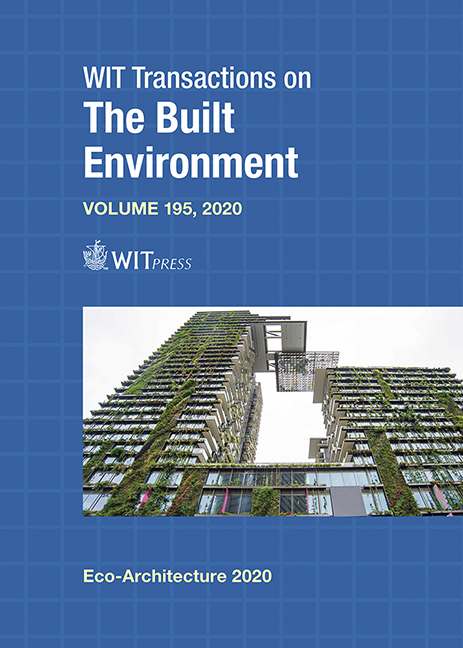INFLUENCE OF MATHEMATICAL COMPOSITION FOR PUBLIC SPACE IN THE EXPERIENCE OF USERS: ALEJANDRO ZOHN’S WORK
Price
Free (open access)
Transaction
Volume
195
Pages
11
Page Range
89 - 99
Published
2020
Paper DOI
10.2495/ARC200071
Copyright
WIT Press
Author(s)
ALFRED ESTELLER AGUSTÍ, ISAMAR A. HERRERA PIÑUELAS, ADOLFO VIGIL DE INSAUSTI
Abstract
Alejandro Zohn’s work in Guadalajara (1930–2000) is analysed in order to recognize its contributions, influences and value in spatial, functional, aesthetic and spiritual experience of the users. The main features of his work are based on arithmetic visions and analytical perspective and is focused on the research for compositions through the use of geometric volumes, usually concrete. Generated through mathematics in a process linked to fractal growth, an issue that from pragmatism and composition become strong characteristics associated with biophilia, aesthetics and well-being, turning the envelope into a complex map of visual codes. Hence starts the extensive use of the hyperbolic paraboloid, following the path of Eduardo Torroja and Félix Candela, giving it a masterful expressive depth using contrasts along with traditional materials and natural elements. It is this duality that brings the spatial aesthetic closer to the user’s appreciation by combining forms that refer us to the anthropic; intellectual and ethereal, with natural elements that link us to a more instinctive and biological level. Systematic observation methods and user surveys allows us to obtain conclusions of the analytical exercise from a perspective of perception of the public space, linked to a contrast of results of homologous exercises in the area of neurourbanism and with a deductive logical method that allows to obtain particular conclusions where links and logics are established associated with architectural volumetric.
Keywords
nature-related forms, fractal growth, neurourbanism, functional structures, shadow, monumentalism, hyperbolic paraboloids, geometry





